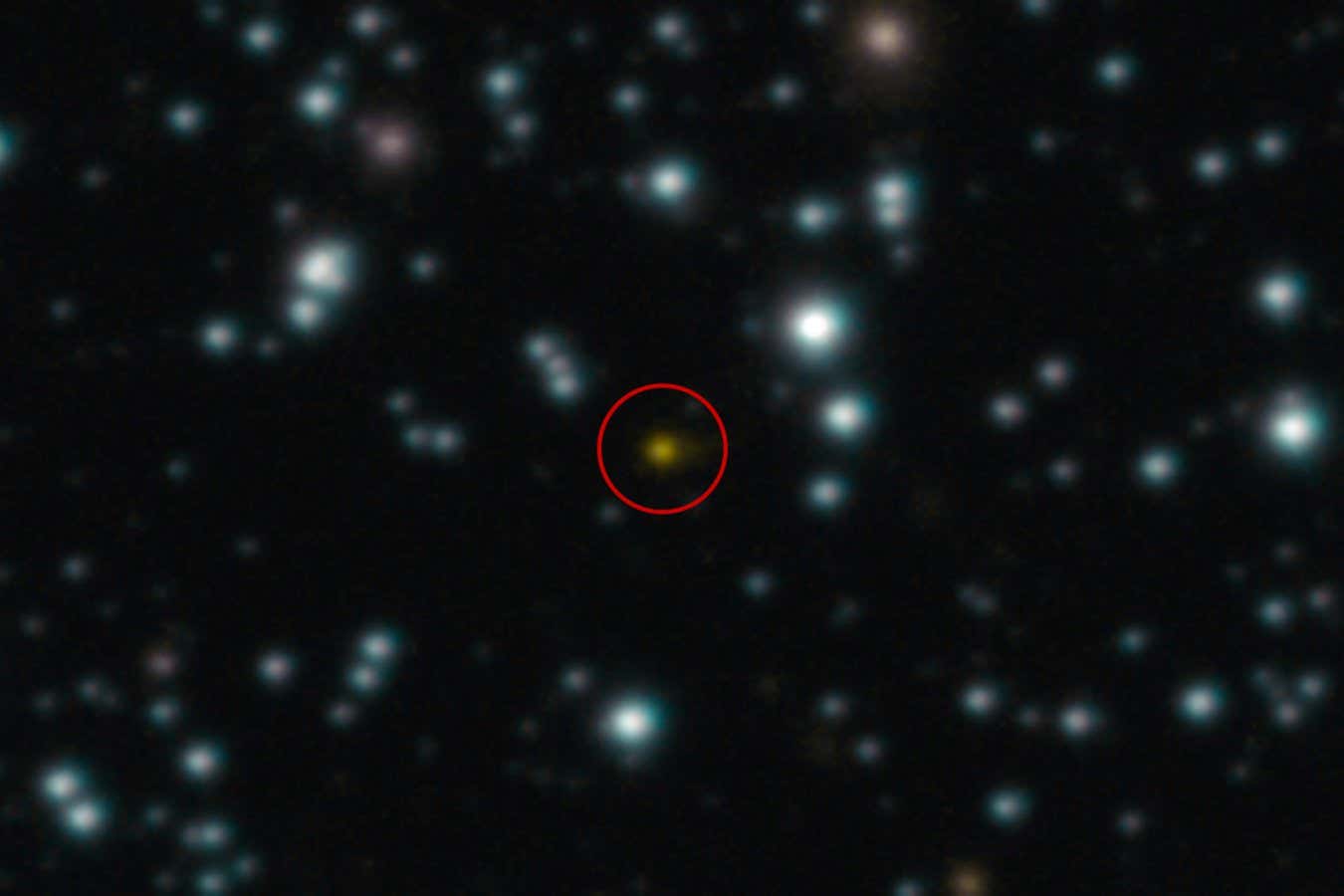

This orange dot is a gamma-ray burst that seems to be a sign of an unusual event
ESO/A. Levan, A. Martin-Carrillo et al.
A black hole that was eaten by a star seems to have gotten revenge by consuming the star from the inside, producing a gamma-ray burst spotted about 9 billion light-years from Earth.
The burst, called GRB 250702B, was first spotted by NASA’s Fermi Gamma-ray Space Telescope in July. Such bursts are bright flashes caused by jets fired out from energetic events, such as massive stars collapsing into black holes or neutron stars merging, and they usually last no more than a few minutes.
GRB 250702B, however, lasted for 25,000 seconds – or about 7 hours – making it the longest-known gamma-ray burst. Scientists had struggled to explain it, but Eliza Neights at NASA’s Goddard Space Flight Centre in the US and her colleagues now suggest an unusual and rare possibility.
“The only [model] which naturally explains the properties observed in GRB 250702B is the fall of a stellar-mass black hole into a star,” the researchers write in a paper about their work.
In more-typical long gamma-ray bursts, a massive star collapses to form a black hole, launching jets as it dies. In this case, the team suggests the reverse – a pre-existing black hole spiralled into a companion star whose outer layers had expanded late in its life, causing the black hole to lose angular momentum and fall towards the star’s core.
The black hole would then have consumed the star from the inside-out, producing the powerful jets seen as GRB 250702B and possibly triggering a faint supernova, albeit one that was too dim to detect at this distance, even with the James Webb Space Telescope.
This explanation makes sense for how an ultra-long burst like this might occur, says Hendrik van Eerten at the University of Bath in the UK. “The argument posed in this paper is a very compelling one,” he says.
Neights and her colleagues hope that more events like this might be observed in the future, thanks to upcoming telescopes like the Vera Rubin Observatory in Chile. For now, this gamma ray burst remains “an absurdity”, says Van Eerten.
Topics:



